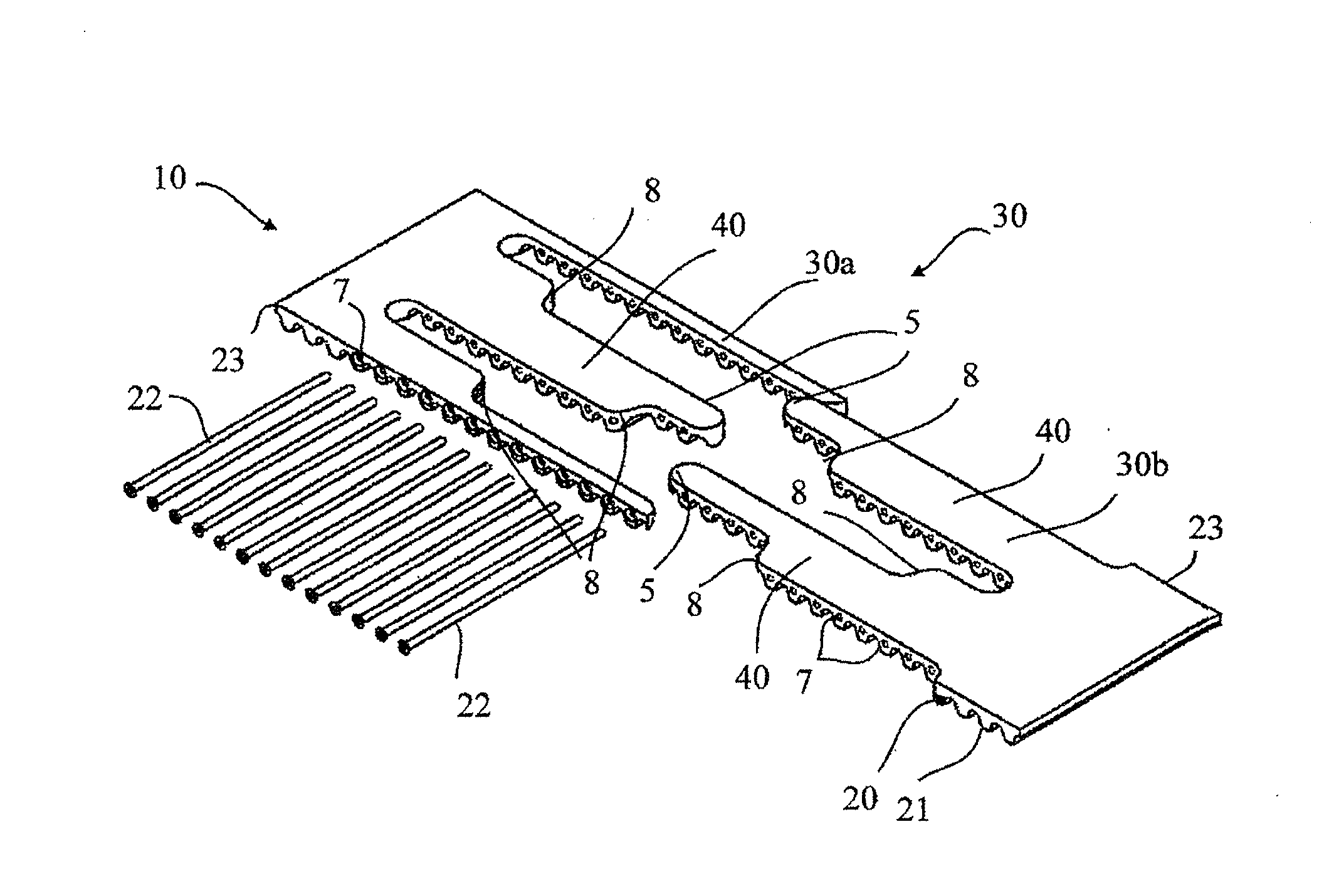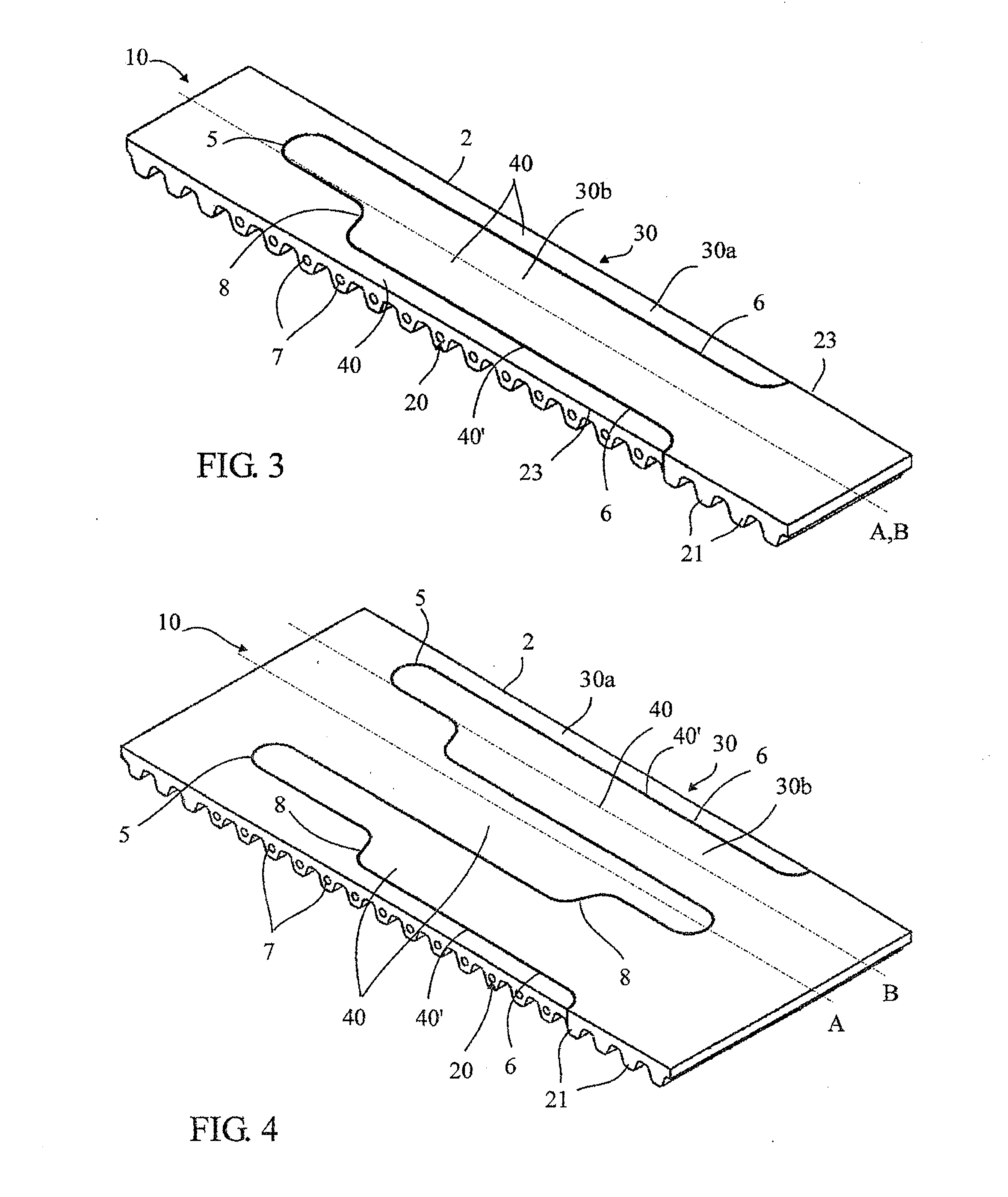Looped material band provided with a splice
a technology of looped material and splice, which is applied in the direction of driving belts, belt fastenings, v-belts, etc., can solve the problems of affecting the mechanical resistance and fatigue life properties of production equipment, and affecting the profitability of production equipment. , to achieve the effect of preserving mechanical resistance and fatigue life properties
- Summary
- Abstract
- Description
- Claims
- Application Information
AI Technical Summary
Benefits of technology
Problems solved by technology
Method used
Image
Examples
first embodiment
[0040]FIG. 9 illustrates a flat strip 2 to form the looped material band 120 illustrated in FIG. 10, comprising two splice areas 30, made for example according to the variant illustrated in FIGS. 3 to 5 or according to any other equivalent variant such as that illustrated in FIGS. 1 and 2, offset laterally and extending each on a width smaller then half the width of the flat strip 2. So, when the ends of the flat strip 2 are assembled to form the material band 120, the two splice areas 30 are aligned in the width of said band, arranged on both sides of the centerline A of the flat strip 2, and delimit between them a continuous median portion 9, without splice, offering the same advantages in terms of resistance as the previous examples.
second embodiment
[0041]FIG. 11 illustrates a flat strip 2 to form the looped material band 130 illustrated in FIG. 12 comprising three splice areas 30, made for example according to the variant illustrated in FIGS. 3 a to 5 or according to any other equivalent variant such as that illustrated in FIGS. 1 and 2, offset laterally, aligned in a chevron arrangement and extending over a width smaller than the third of the width of the flat strip 2. So, when the ends of the flat strip 2 are assembled to form the material band 130, the three splice areas 30 are aligned in the width of said band, arranged symmetrically with respect to the centerline A of the flat strip 2, and delimit between them two continuous intermediate portions 9, without splice, offering the same advantages in terms of resistance as the previous examples. Furthermore, this symmetrical construction allows balancing the efforts in the material strip 130 obtained, which suits therefore particularly for high-speed or high-power installatio...
PUM
 Login to View More
Login to View More Abstract
Description
Claims
Application Information
 Login to View More
Login to View More - R&D
- Intellectual Property
- Life Sciences
- Materials
- Tech Scout
- Unparalleled Data Quality
- Higher Quality Content
- 60% Fewer Hallucinations
Browse by: Latest US Patents, China's latest patents, Technical Efficacy Thesaurus, Application Domain, Technology Topic, Popular Technical Reports.
© 2025 PatSnap. All rights reserved.Legal|Privacy policy|Modern Slavery Act Transparency Statement|Sitemap|About US| Contact US: help@patsnap.com



